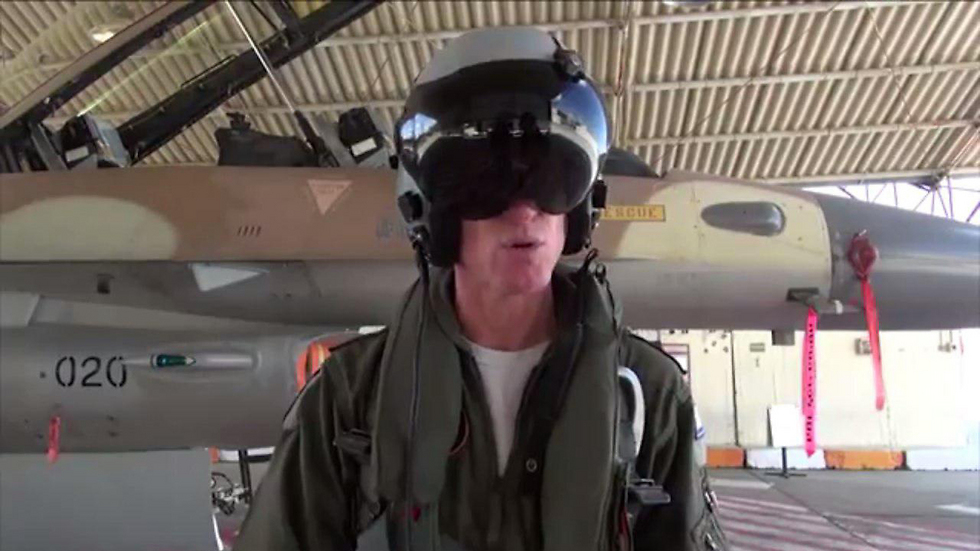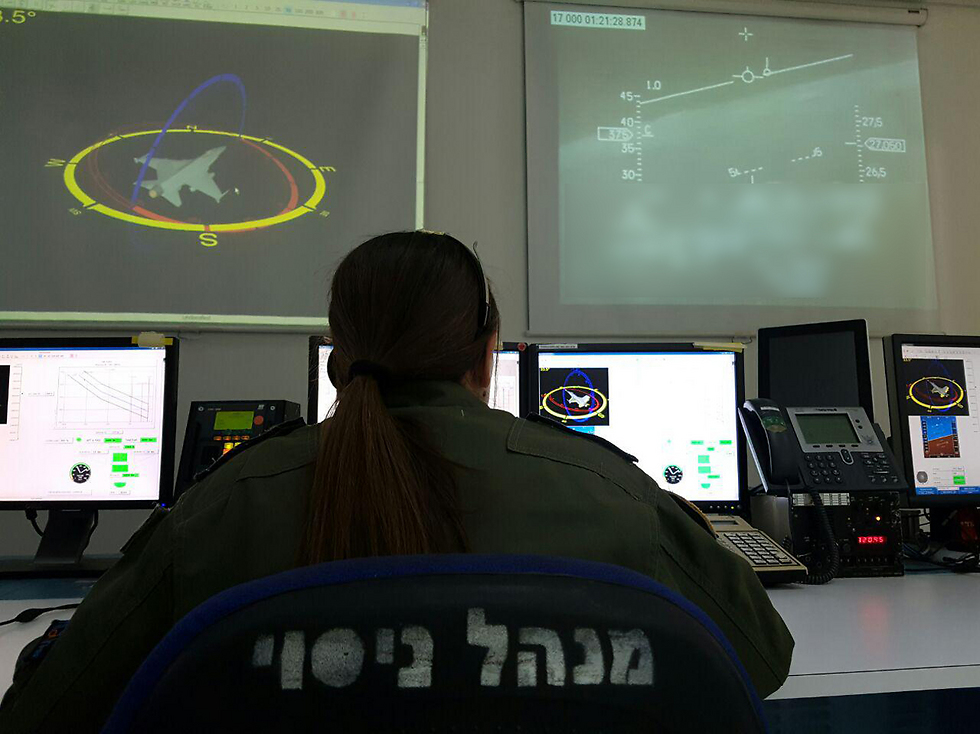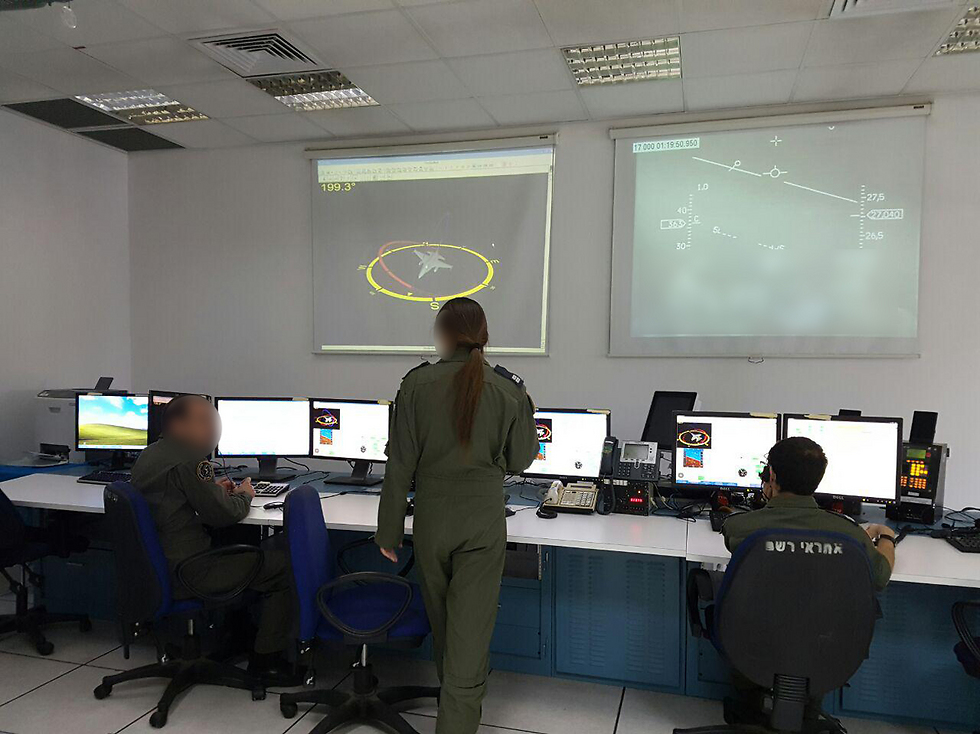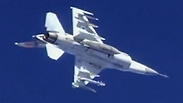
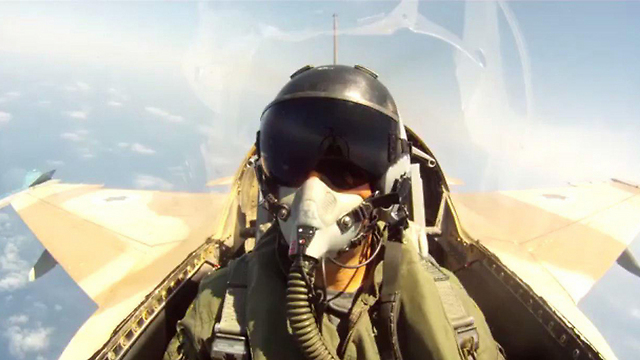
Exclusive footage of IAF exercise shows pilots going down in F-16 nosedive
During three, 12km altitude sorties, two pilots of the Israeli Air Force tested their fighter plane to lose control, resulting in a 500km/h dive at a 90 degree angle toward the sea; The objective of the exercise is to examine the issue of upgraded munitions; 'I wasn't afraid, fear isn't in our lexicon,' says squadron commander participating in the exercise.
During three major excursions, the jet was tested in a number of possible occurrences, which included the loss of intentional control of the two pilots at an altitude of 12 kilometers above sea level, the maximum altitude in which the aircraft's capabilities can be used. The pilots were required to carry out a sharp maneuver at a 260 degree angle at the very least.
The munitions carrier, from which the jet's bombs are fired, has already been used by the Air Force, but so far not in the situations that were tested in the exercise. Upon its conclusion, it was recommended that the munitions carrier should not be used in the flight conditions tested in the exercise, i.e., that the pilots should not fire the bombs carried by it while performing such maneuvers.
The road to this conclusion was long, lasting six months, and included preparations and 30 preliminary sorties leading up to the test flight. The above footage shows a rare recording of a pilot in a (simulated) moment of loss of control: the plane's speed drops to zero, as the control panel flashes warning signs, urging the pilot to take the plane out of autopilot and manually intervene.
For almost a minute, the commander of the Flight Test Center, Lt. Col. Shlomi, experienced the loss of control in almost 30 seconds, and the plane plunged to the sea at a speed of 500 mph at 90 degrees angle.
The exercise was conducted over the Mediterranean for safety reasons, though near the Tel Nof Air Force base, where the experimental squadron operates, in case of a catastrophic emergency landing due to engine loss. As soon as the plane lost control, the plane actually fell into its own jet stream, taking a 7,000-foot nosedive until it straightened back, as the two pilots took over from manual control at 25,000 feet.
Chaotic airplane reactions
"Although it was decided not to use this munitions carrier," Lt. Col. Shlomi told Ynet. "From our perspective, the exercise was very successful, since we must ensure that the person using it during an operation has the safest and most effective conditions for fighting. We are their gatekeepers, in all the systems that are used in flight and that are, of course, tested out by us beforehand. (This includes—ed) navigation systems, contact, control, missiles and bombs the planes themselves—combat, training, transport, UAVs and helicopters.
"Personally, I 'I wasn't afraid. Fear isn't in our lexicon. Those who end up in the world of aerial exercises do them with a lot of love. There are 160 of us in the squadron—engineers, pilots, soldiers, technicians, officers and non-officers who must love it. Every day with us is unlike the previous one. These exercises, like the one we carried out, give you the feeling of (being on—ed) a roller coaster, especially when you're upside down, the straps pulling you toward the roof with you feeling just like the airplane itself.
"There is nothing like losing control to make you feel that you're part of this system that's up in the air. The experience has been very exciting, and we came to it prepared, after a long risk management process, with enough steps and actions taken to make sure that the exercise would be safely completed."
Engineers and mission commanders sitting in the control room at the Tel Nof Air Force base were closely monitoring the different phases of the exercise, as they followed visuals of the fighter plane, and the thousands of data that were being processed and analyzed.
"We wanted to test out the plane's durability outside of controlled circumstances," the squadron commander said. "This is complicated, since the aircraft's reactions in such situations are chaotic, and even forecasts or analyses that we know how to do in advance could not predict what will happen," the squadron commander added.
Taking things to the limit
800 excursions, 70 projects at any given moment and more than 100 exercises a year are conducted by the Air Force's squadron. "An exercise can be planned for years or days," said the squadron commander. "We also take part in the operations of the inter-war campaign (Israel's fight against terrorism and enemy entities, including special and secret operations against Hamas and Hezbollah—ed). We are required to try it out quickly, in short intervals of time.
"The work here is 24/7, and what fascinates the people here is that you can go all the way, try things that nobody has done yet, be the first, sometimes in the whole world, to bring about new aerial capabilities."















